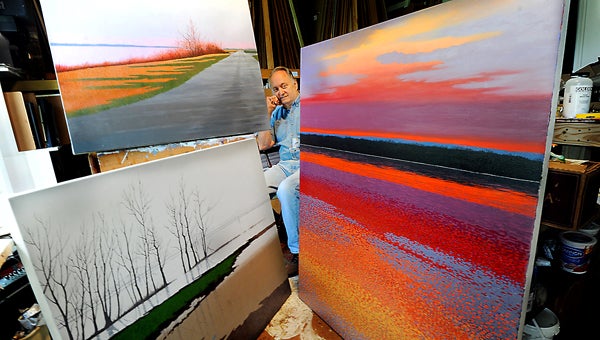Playgrounds: can they be too safe?
Published 12:13 am Friday, August 12, 2011
Gibson’s interest was piqued when we walked past the pit of red, yellow and blue balls. He had seen similar playgrounds at popular fast-food restaurants before. He knew how much fun jumping into a pile of rubber balls could be, but these balls were the size of the balls in dollar store ball bins, nine and twelve inches or more in diameter and the ball pit was ten feet by twenty feet. Things seemed a bit larger than life.
When my two-year-old son spied the two large airplanes 75 feet off the ground and the fire engine and school bus hanging off the wall of the Saint Louis City Museum his tiny little body went into overdrive.
There are two themes to this ultimate playground they call a museum. The staff has them printed on their T-shirts to remind their visitors — “There is no map.” and “Get lost.” Both ideas strike fear in parents staring into the maze of steel, concrete, brick and other objects repurposed from the city and giving the place its name.
When a toddler kicks his little feet into high gear climbing up, down, in, around and through tunnels, towers and bridges of salvaged steel and wire mesh, a parent is wary, even when close behind or hand-in-hand.
Still, parents showed no hesitation acting like children themselves.
Looking into my son’s eyes as he slid down the four-story slide in his mother’s lap and snaked through the Slinky-like tunnel of wire, my best description of the City Museum is that it is a place allows the imagination to soar. It allows children of all ages to push the envelope.
Isn’t that what the best playgrounds do after all — give children the opportunity to explore heights, experience high speeds and test limits?
Gibson would nod a definite yes and so would a few researchers from Norway who say that is what is missing from modern day playgrounds.
You know the ones. They are the play areas that are all about soft surfaces, low equipment and reduce the risk of fall and injury. The monkey bars are gone and so, too, are the tall slides.
“Boring,” Gibson might say about these playgrounds. Gibson experienced one of these low-impact playgrounds first hand on our ten-hour trip to Saint Louis.
Anyone who has ever driven with a two-year old to visit family many hours away knows that a child can only sit in a car seat for so long.
To prevent a inevitable meltdown, the Hillyer’s stopped at a playground in Cape Girardeau, Mo., for a playground break at a safe playground — with low climbing equipment and low bars. Much more interesting than another ride in the car seat, Gibson played on the plastic equipment. But the joy on his face paled in comparison to his euphoria at the City Museum.
“Children need to encounter risks and overcome fears on the playground,” Ellen Sandseter, a Norway researcher reported. “Children approach thrills and risks in a progressive manner, and very few children would try to climb to the highest point for the first time they climb. The best thing is to let children encounter these challenges from an early age, and they will then progressively learn to master them through their play over the years.”
In other words, children have a good idea of what they can and cannot do.
Of course there are always falls — some that cause physical harm. But the same researchers have discovered that, in fact, “safe playgrounds” have not greatly reduced the number of injuries on the playground. Interestingly, studies also show that a child who’s hurt in a fall before the age of 9 is less likely to fear heights as a teenager.
Gibson didn’t care about all that research and statistic stuff. He just wanted to get to that fire truck hanging off of that five story balcony. Dad won’t be far behind.
Ben Hillyer is the design editor of The Natchez Democrat. He can be reached at 601-445-3540 or by e-mail at ben.hillyer@natchezdemocrat.com.


